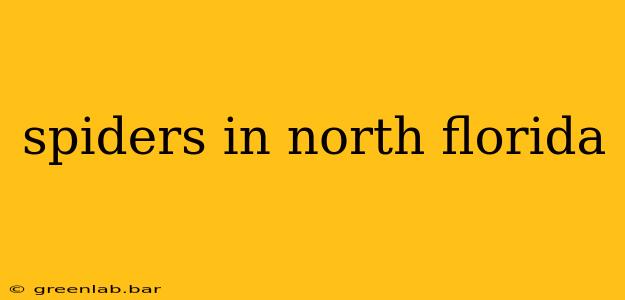North Florida boasts a diverse ecosystem, and this biodiversity extends to its spider population. While most spiders are harmless, understanding the common species in the region is crucial for safety and peace of mind. This guide explores the spiders you're likely to encounter in North Florida, differentiating between harmless and potentially dangerous species. We'll also offer practical tips on spider control and prevention.
Common Spiders Found in North Florida
North Florida's climate supports a variety of spider species, ranging from tiny cellar spiders to larger, more noticeable orb-weavers. Here are some of the most frequently seen:
Harmless Spiders:
-
Orb Weavers: These spiders are easily recognizable by their large, intricate webs. Many orb-weavers are brightly colored and relatively large, but they are generally not aggressive and pose little threat to humans. Their bite, while possible, is usually harmless, similar to a mosquito bite. Common orb-weavers in North Florida include the garden spider ( Argiope aurantia) and various other species within the Araneidae family.
-
Jumping Spiders: Known for their excellent eyesight and hunting prowess, jumping spiders are small and usually brightly colored. They are active hunters, stalking and pouncing on their prey rather than relying on webs. Their bites are generally harmless to humans.
-
Wolf Spiders: These large, hairy spiders are often found in gardens and around homes. They are ground-dwelling hunters, and while their bite can be painful, it's rarely medically significant. They are not aggressive unless threatened.
-
Crab Spiders: These spiders are masters of camouflage, often blending into flowers or foliage. They're ambush predators, waiting for prey to approach. Their bites are usually not harmful to humans.
Potentially Dangerous Spiders:
-
Brown Recluse ( Loxosceles reclusa): While less common in North Florida than in other parts of the state, the brown recluse is a venomous spider. Its bite can cause a necrotic lesion (tissue death) in some individuals. Identifying a brown recluse requires close examination for a characteristic fiddle-shaped marking on its back. It's crucial to consult a medical professional if bitten by a suspected brown recluse.
-
Black Widow ( Latrodectus species): Several species of black widow spiders are found in North Florida. These spiders are easily identifiable by the distinctive red hourglass marking on their abdomen. Their venom is neurotoxic, causing muscle pain, nausea, and other symptoms. While rarely fatal, a black widow bite requires immediate medical attention.
Spider Control and Prevention in North Florida
While many spiders are beneficial, controlling their populations around your home is often desirable. Here are some effective methods:
-
Regular Cleaning: Keep your home and yard clean. Remove clutter, debris, and overgrown vegetation where spiders like to build webs and hide.
-
Seal Entry Points: Caulk cracks and gaps in walls, foundations, and windows to prevent spiders from entering your home.
-
Natural Repellents: Some essential oils, like peppermint and tea tree oil, are believed to deter spiders. However, their effectiveness varies.
-
Professional Pest Control: For severe infestations, consider contacting a professional pest control service. They can provide targeted treatments to effectively manage spider populations.
Conclusion
Understanding the types of spiders found in North Florida is essential for ensuring safety and managing potential problems. While most spiders are harmless and even beneficial to the ecosystem, knowing how to identify potentially dangerous species like brown recluses and black widows is crucial. Combining preventative measures with informed action can minimize encounters and maintain a peaceful coexistence with these eight-legged inhabitants of North Florida. Remember, always seek professional medical attention if bitten by a spider you suspect to be venomous.

